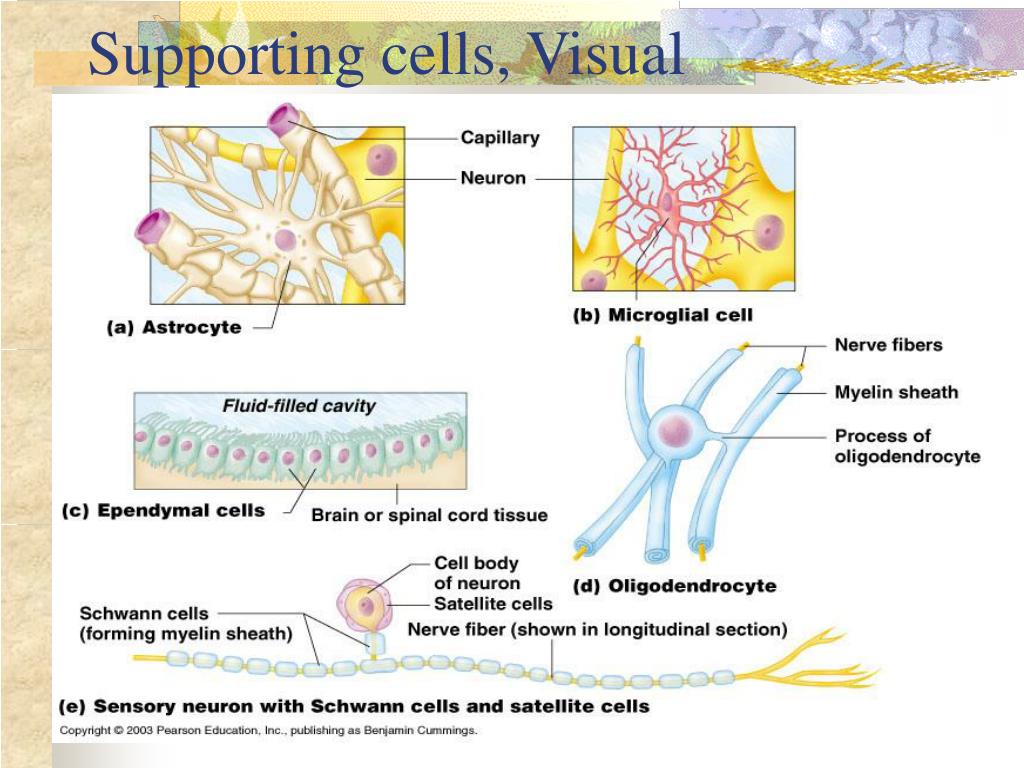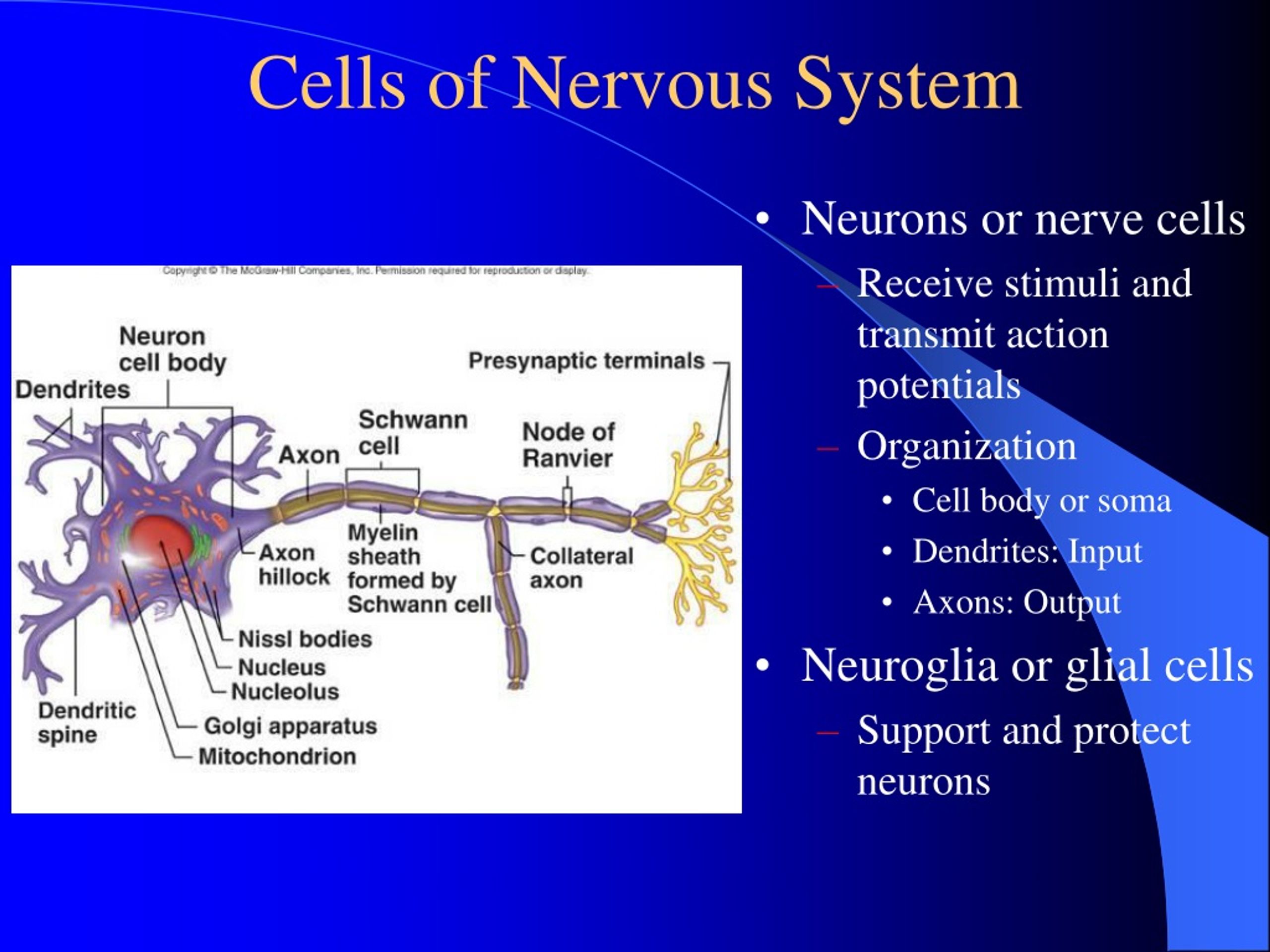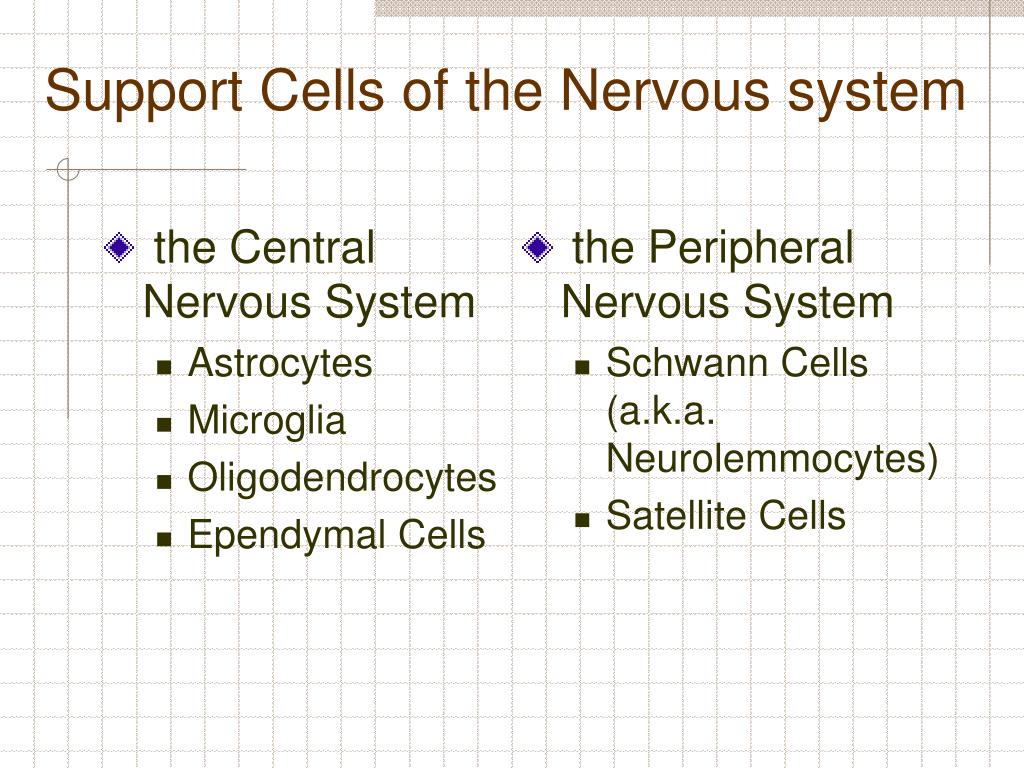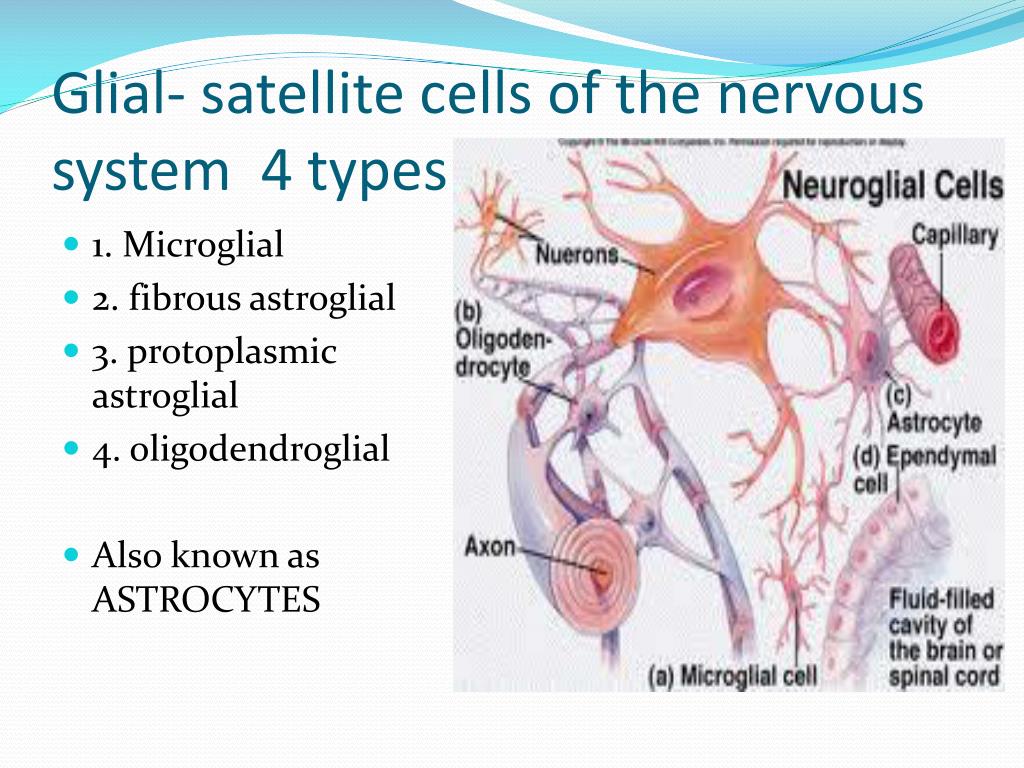Supporting Cells Of The Nervous System Are Collectively Called

Imagine the brain as a bustling city, a vibrant metropolis of thought, feeling, and action. Within this city, countless messages zip along intricate pathways, a constant flurry of electrical and chemical signals. But what keeps this intricate network functioning smoothly? Who are the unsung heroes ensuring the lights stay on and the streets remain clear?
These essential support personnel of the nervous system, often overshadowed by their more celebrated counterparts, the neurons, are collectively known as glial cells or neuroglia. This article explores the fascinating world of glial cells, delving into their diverse roles and highlighting their critical importance for a healthy and well-functioning nervous system.
The Unsung Heroes: A Closer Look at Glial Cells
The term glia comes from the Greek word for "glue," reflecting the early understanding that these cells merely held neurons together. However, modern research has revealed that glial cells are far more than just passive support structures. They are active participants in neural communication, development, and repair.
In fact, glial cells are the most abundant cell type in the central nervous system (CNS). They outnumber neurons, sometimes by a factor of 10 to 1, depending on the brain region.
Types of Glial Cells
There are several types of glial cells, each with specialized functions. These can be broadly classified into those found primarily in the central nervous system (CNS) and those found in the peripheral nervous system (PNS).
Central Nervous System (CNS) Glia
The CNS glial cells include astrocytes, oligodendrocytes, microglia, and ependymal cells. Each type plays a crucial role in maintaining the health and function of the brain and spinal cord.
Astrocytes, the most numerous glial cells in the brain, are star-shaped and perform a wide array of functions. They regulate the chemical environment around neurons, providing them with nutrients and removing waste products.
Astrocytes also help to form the blood-brain barrier, a protective barrier that shields the brain from harmful substances in the bloodstream. Furthermore, they participate in synaptic transmission, influencing the communication between neurons.
Oligodendrocytes are responsible for myelination in the CNS. Myelin is a fatty substance that wraps around axons, the long, slender projections of neurons, insulating them and speeding up the transmission of electrical signals.
This process is crucial for efficient communication within the nervous system. Damage to oligodendrocytes and the myelin sheath can lead to debilitating neurological disorders like multiple sclerosis.
Microglia are the immune cells of the CNS. They act as scavengers, removing cellular debris and pathogens.
They also play a role in synaptic pruning, eliminating unnecessary or weak synapses during development. Research suggests that microglia may be involved in neurodegenerative diseases and psychiatric disorders.
Ependymal cells line the ventricles of the brain and the central canal of the spinal cord. They produce cerebrospinal fluid (CSF), which cushions the brain and spinal cord, protecting them from injury.
Ependymal cells also have cilia, hair-like structures that help to circulate CSF throughout the CNS.
Peripheral Nervous System (PNS) Glia
The PNS glial cells include Schwann cells and satellite glial cells. They provide support and protection to neurons in the peripheral nerves.
Schwann cells are similar to oligodendrocytes in that they provide myelination, but they do so in the PNS. Each Schwann cell myelinates a single segment of an axon, unlike oligodendrocytes, which can myelinate multiple axons.
Schwann cells also play a crucial role in nerve regeneration after injury. They guide the regrowth of damaged axons, helping to restore nerve function.
Satellite glial cells surround neurons in ganglia, clusters of nerve cell bodies located outside the CNS. They provide support and nourishment to these neurons.
Satellite glial cells are also thought to regulate the chemical environment around the neurons and may play a role in pain sensation.
The Significance of Glial Cells: Beyond "Glue"
The understanding of glial cell function has undergone a revolution in recent years. No longer viewed as passive support cells, glial cells are now recognized as active and essential participants in virtually every aspect of nervous system function.
Dysfunction of glial cells has been implicated in a wide range of neurological disorders, including Alzheimer's disease, Parkinson's disease, multiple sclerosis, and amyotrophic lateral sclerosis (ALS). Understanding the role of glial cells in these diseases is crucial for developing new therapies.
For example, research is focusing on targeting microglia to reduce inflammation in neurodegenerative diseases. Similarly, strategies to promote oligodendrocyte regeneration are being explored to treat multiple sclerosis.
A Shifting Paradigm in Neuroscience
The increasing recognition of the importance of glial cells has led to a paradigm shift in neuroscience. The traditional neuron-centric view is being replaced by a more holistic perspective that acknowledges the intricate interplay between neurons and glial cells.
Scientists are now investigating how glial cells communicate with neurons and with each other. They are also exploring the role of glial cells in higher cognitive functions, such as learning and memory.
“The study of glial cells is opening up exciting new avenues for understanding the brain and treating neurological disorders,” says Dr. Anya Sharma, a leading neuroscientist at the National Institutes of Health. “We are just beginning to scratch the surface of what these remarkable cells can do.”
The continued exploration of glial cell biology promises to unlock new insights into the complexities of the nervous system and pave the way for innovative therapies for a wide range of neurological and psychiatric disorders. The future of neuroscience hinges, in part, on our deepened understanding of these crucial supporting cells.
Looking Ahead: The Future of Glial Cell Research
As research continues, the importance of glial cells will become even more evident. Future studies will likely focus on understanding the specific roles of different glial cell subtypes in various brain regions and their contribution to complex behaviors.
Advances in imaging techniques and genetic manipulation are providing new tools to study glial cells in vivo. This will allow scientists to observe glial cell activity in real-time and to manipulate glial cell function to understand their effects on neural circuits.
The development of glial cell-targeted therapies is also a major focus of research. By selectively targeting glial cells, it may be possible to treat neurological disorders with greater precision and fewer side effects. The journey to fully understand glial cells and harness their therapeutic potential is just beginning.


















